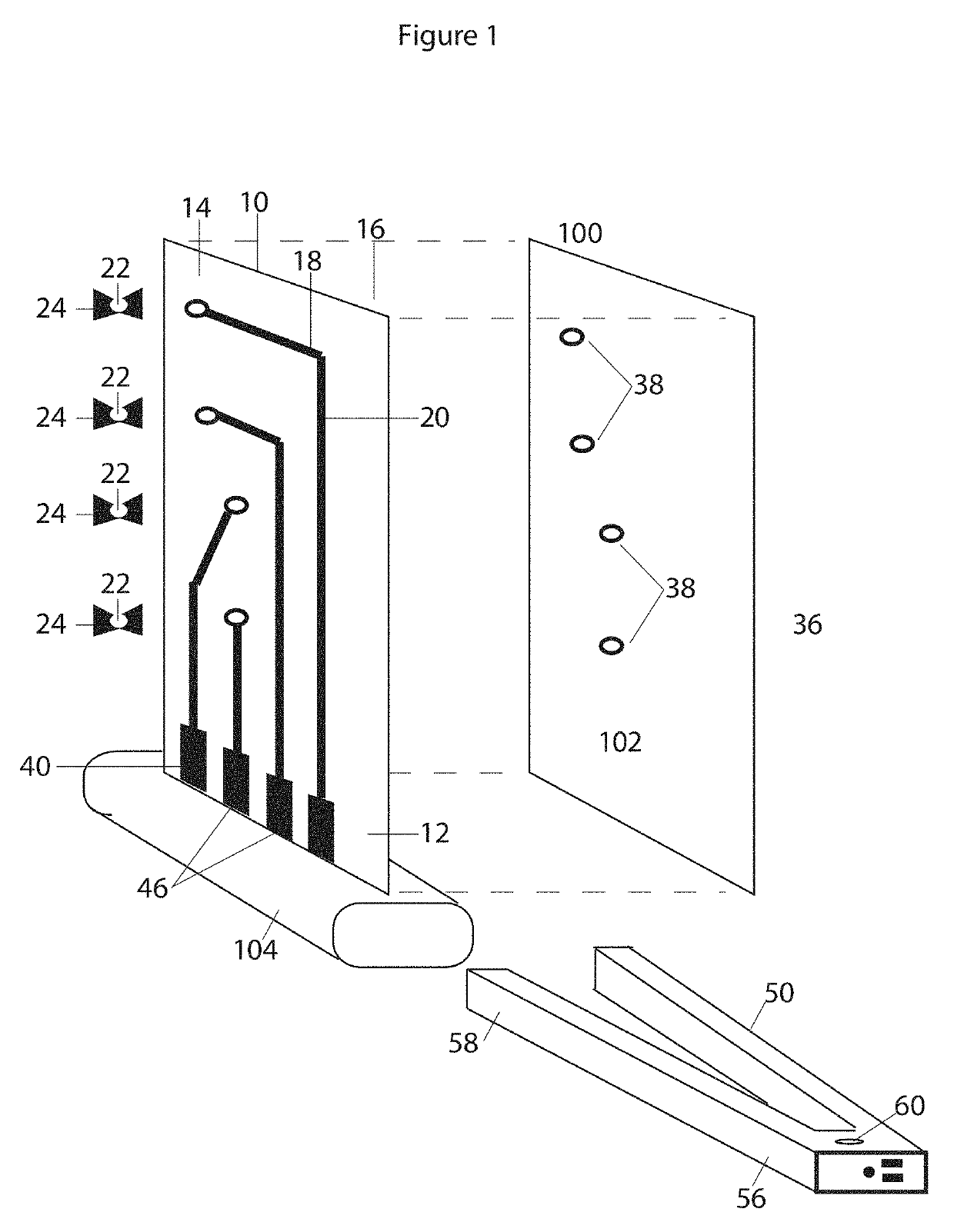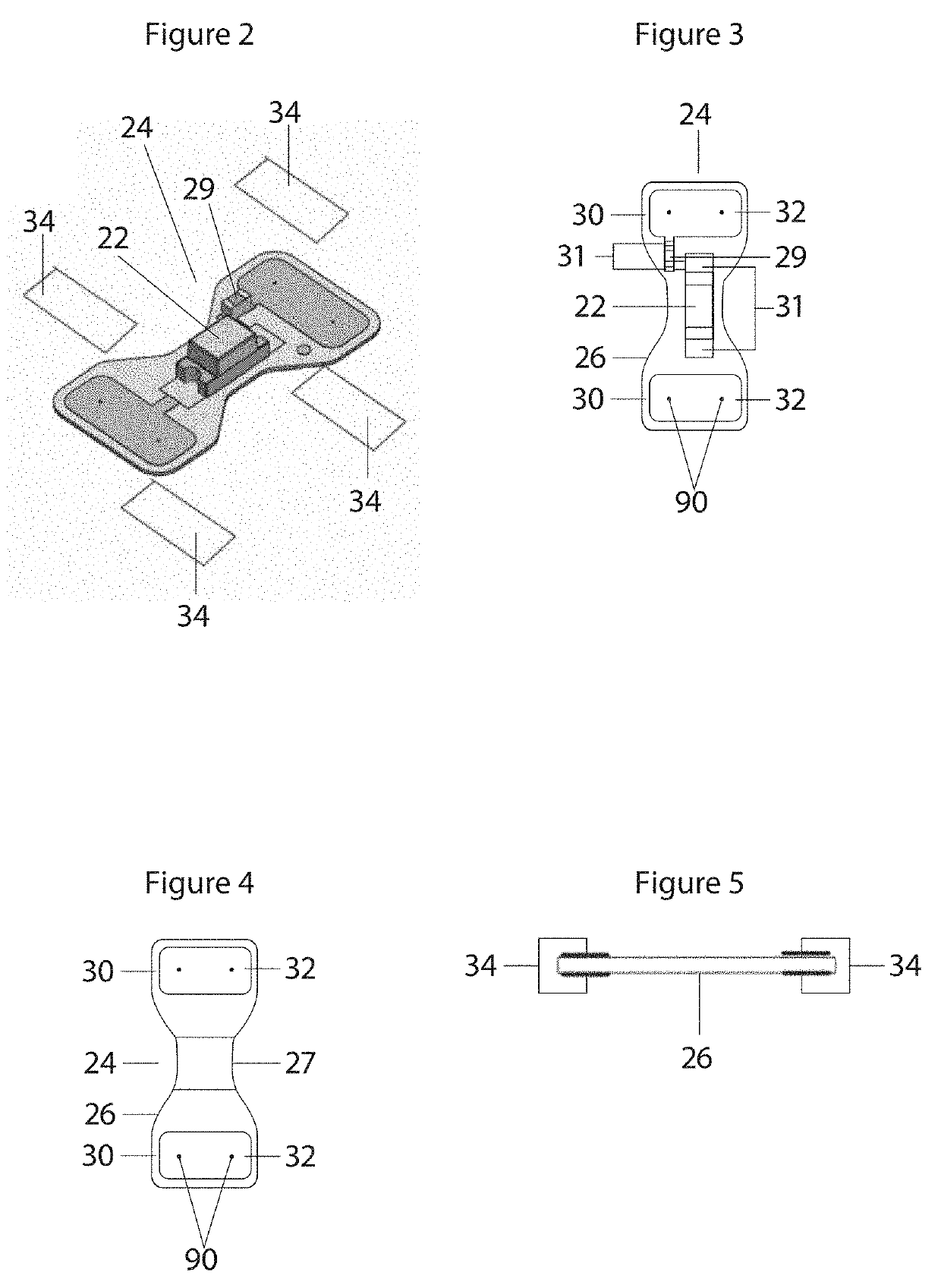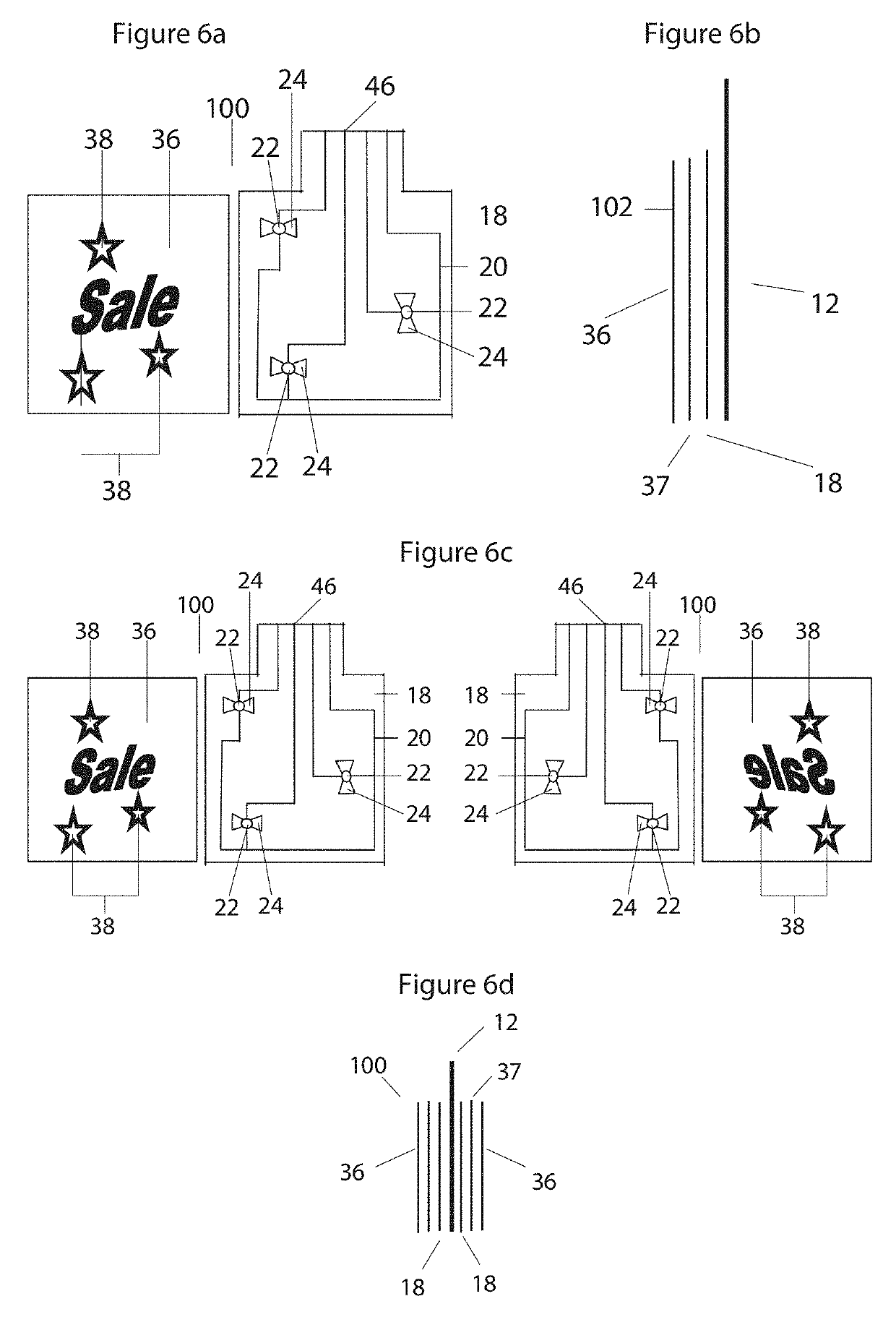Flexible printed circuit
a printed circuit and flexible technology, applied in the association of printed circuit non-printed electric components, conductive material electric discharge removal, instruments, etc., can solve the problems of affecting the operation of portions, carbon coated polyester or paper was too expensive, and production rolls were not wide enough to achieve the effect of convenient folding
- Summary
- Abstract
- Description
- Claims
- Application Information
AI Technical Summary
Benefits of technology
Problems solved by technology
Method used
Image
Examples
Embodiment Construction
[0056]A flexible printed circuit generally identified by reference numeral 10, will now be described with reference to FIG. 1 through 28.
Structure and Relationship of Parts:
[0057]Referring to FIG. 1, there is illustrated a preferred embodiment of flexible printed circuit 10 which includes a flexible supporting substrate 12 having a first face 14 and a second face 16. Flexible printed circuit 10 is shown being used for a Point of Purchase (POP) display, generally indicated by reference numeral 100. In this preferred embodiment, flexible supporting substrate 12 is a polyester film. It will be appreciated that a plastic woven material or open pattern plastic material could be used. Conductive material 18 is positioned on first face 14, second face 16 or both first face 14 and second face 16. In this preferred embodiment, conductive material 18 is a conductive metal, preferably copper. A polyester film for supporting substrate 12 is preferred because a polyester film can be treated with...
PUM
| Property | Measurement | Unit |
|---|---|---|
| thickness | aaaaa | aaaaa |
| thickness | aaaaa | aaaaa |
| size | aaaaa | aaaaa |
Abstract
Description
Claims
Application Information
 Login to view more
Login to view more - R&D Engineer
- R&D Manager
- IP Professional
- Industry Leading Data Capabilities
- Powerful AI technology
- Patent DNA Extraction
Browse by: Latest US Patents, China's latest patents, Technical Efficacy Thesaurus, Application Domain, Technology Topic.
© 2024 PatSnap. All rights reserved.Legal|Privacy policy|Modern Slavery Act Transparency Statement|Sitemap



